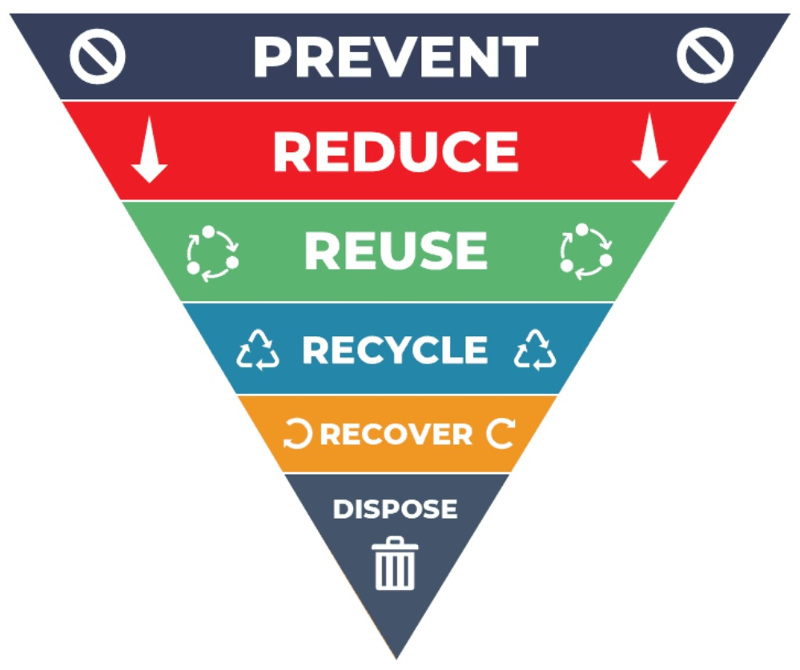 Reduce, reuse, recycle. We have heard it for decades now, and for most of us, it has become our standard approach to managing waste, but in the years to come, the focus will change.
Reduce, reuse, recycle. We have heard it for decades now, and for most of us, it has become our standard approach to managing waste, but in the years to come, the focus will change.
Our three Rs will expand to Prevent, Reduce, Reuse, Recycle, Recover, and Dispose, as municipalities everywhere continue to grapple with waste management.
The ‘prevent’ aspect of the updated approach to waste management is a crucial new focus, as it will require the producers of consumer goods to rethink their packaging, and it will remind consumers to consider the amount and type of packaging for products as part of the shopping experience.
I have argued many a time that consumers have done a great job in adopting local recycling programs. When I was a child there were no blue boxes, no green bins; everything, and I mean everything, was tossed into green trash bags and dragged to the curb each week. It would not have been uncommon to see a family of four dispose of three or four bags of trash each and every week, all headed to a landfill.
In my teenage years a blue plastic box arrived at our home, and for the first time we were asked to sort things like glass jars and bottles (soda still came in glass bottles in those days), as well as newspapers and soup cans, out of our regular garbage stream and into that blue box.
As you can either imagine or recall, there was resistance in the early going, with some absolutely insulted at being asked to sort their trash, but slowly we all adopted the process, and today it is simply a way of life for the vast majority of us who make good use of those blue boxes.
As a result of our recycling efforts, the amount of trash we were sending to landfills declined, but those trash bags were still pretty hefty as they were dragged to the curb each week.
Roughly a decade ago many municipalities, including Meaford, began offering curbside organics collection, and it wasn’t long before many of us were using those green bins to divert our kitchen waste from landfills. From eggshells to coffee grounds, to bones and vegetables, our trash bags became much easier to drag to the curb as the bulk of the heaviest items, food waste, was rolled to the curb in a green bin.
As with the introduction of the blue boxes for recycling, there was resistance initially, but today, most in this community use their green bins faithfully, if only to avoid using too many bag tags.
Bag tags, another program that did not exist when I was a child, nor for most of my adulthood. But as municipalities worked to meet provincially mandated waste diversion rates, charging folks a couple of bucks (in Meaford these days it is now $4) to dispose of a bag of trash. The introduction of bag tag programs saw an increase in participation in both the blue box and green bin programs, and even more waste was diverted from landfills.
As I have written many times, we consumers have done our part, obediently following the various programs as they have been rolled out to us, but it is time for corporations to step up, and assume their own responsibility.
As I wrote in an editorial back in 2016:
If you step back and look at how far we’ve come by voluntarily adopting the recycling of glass, plastic, and metal items, and then later separating our compostable items, we should be pleased with what we’ve accomplished.
But I think consumers have done pretty much what we can in the effort to reduce waste. We’ve taken the time and effort to separate all the various types of waste into their special bins, we pay the $2.50 for a bag tag each time we need to dispose of waste that we can’t drop in the blue or green boxes, heck, we’ve even started separating out plastic film, which while low in weight (which means it’s little help in the reduction of actual tonnage sent to landfill), would take eons to degrade in a landfill.
Thus far, however, little has been asked of manufacturers to reduce the amount of packaging materials used for the products we buy, let alone taking on some of the responsibility for the disposal (or better yet, recycling) of the products themselves when they can no longer be used.
Granted, we have seen some reduction in packaging lately, but much, much more could be done in that area (how often have you found yourself grinding your teeth on Christmas morning fighting through layer upon layer of packaging so that the kids can actually play with a new toy?), and I think that not just the amount of packaging should be considered, but also the types of materials used.
Over the next few years, the blue box recycling program will be shifted from municipal responsibility to the province, and ultimately to the very manufacturers who produce the products we consume, and the focus will shift from the traditional 3Rs to the primary focus of ‘prevention’. Shifting the responsibility for and cost of recycling collection in Ontario to manufacturers is sure to result in drastically reduced packaging along with new and innovative packing materials that can biodegrade quickly, rather than rot in landfills for eons, and that can only benefit everyone.











